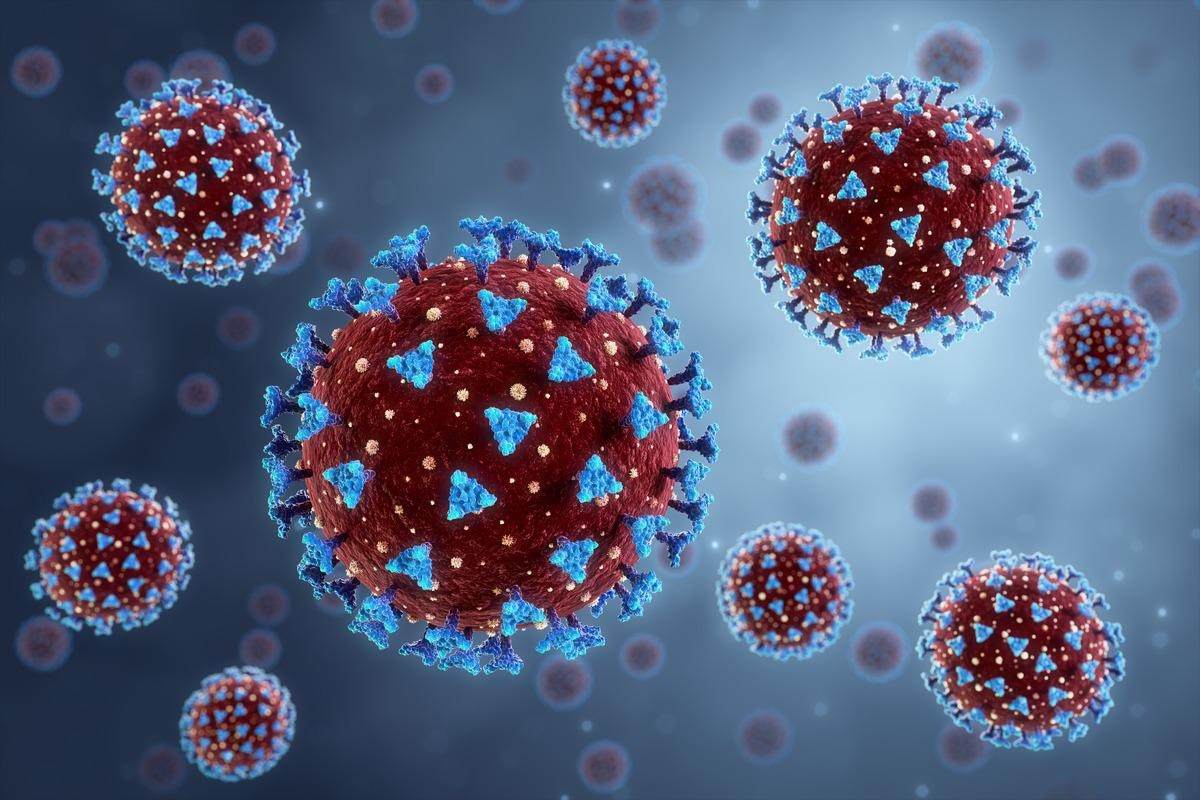New research published in The Lancet Diabetes & Endocrinology suggests that severe acute respiratory syndrome coronavirus 2 (SARS-CoV-2) infection can directly target and cause cellular damage to the adrenal glands. The resulting adrenal dysfunction may explain adrenal insufficiency in several patients infected with severe coronavirus disease 2019 (COVID-19) infection, along with some of the complications associated with long COVID.
 Study: COVID-19 targets human adrenal glands. Image Credit: JBArt/Shutterstock
Study: COVID-19 targets human adrenal glands. Image Credit: JBArt/Shutterstock
Background
The adrenal glands secrete a wide variety of hormones to help regulate vital processes in the body. It is the main source of glucocorticoids, which are essential in surviving sepsis infection.
Among other life-threatening conditions, people with severe COVID-19 illness have developed sepsis. Older adults are among the most at-risk of developing severe infection, prompting doctors to look into using adrenal steroids such as budesonide for early treatment of COVID-19 infection.
Adrenal glands are susceptible to damage from sepsis-induced multiorgan failure. In addition, the adrenal glands’ high vascularization and blood supply can increase the risk for endothelial dysfunction and hemorrhage.
Similar symptoms implying adrenal dysfunction have been observed in severe COVID-19 cases as some patients experienced endothelial damage, bilateral hemorrhages, infarctions, and sepsis-associated illness-related corticosteroid insufficiency.
In another study, the researchers described patients with mild to moderate COVID-19 infections developing adrenocorticotropic hormone responses congruous with critical illness-related corticosteroid insufficiency. However, it remains unknown if SARS-CoV-2 indirectly or directly damaged the adrenal glands. For instance, other factors such as pituitary damage or other undiagnosed conditions such as antiphospholipid syndrome may directly cause adrenal dysfunction.
The study
The researchers sought to find the root of adrenal damage in COVID-19 infections and whether SARS-CoV-2 directly or indirectly caused it. They studied adrenal gland tissues from 40 patients who died from COVID-19 illness in Germany or Switzerland.
Six cases had low density, and 13 cases had high-density cases of cellular damage and frequent small vessel vasculitis called endothelins in their periadrenal fat tissue. About 10 cases showed milder instances of adrenal parenchyma, and one case had a moderate version of it.
The researchers did not find any evidence of thrombi formation, widespread hemorrhages, or degradation of adrenocortical cells. In 38 of the 40 cases, the team observed enhanced perivascular lymphoplasmacellular infiltration of different densities and sporadically mild extravasation of erythrocytes.
Adrenal glands are a popular target amongst invading pathogens, including SARS-CoV. Because SARS-CoV-2 shares some features and morphology with SARS-CoV, including the ACE2 protein and the transmembrane protease serine subtype 2, direct targeting in COVID-19 infections is possible.
The team compared the adrenal gland tissues from the 40 deceased patients with the adrenal gland tissues of patients who died before the COVID-19 pandemic to test their theory. In 18 of the 40 cases, the team used a monoclonal antibody to confirm the SARS-CoV-2 spike protein in adrenocortical cells.
Results showed detectable evidence of SARS-CoV-2 spike protein in the adrenal cortex. SARS-CoV-2 expression was observed in 15 out of 30 adrenal gland tissues of patients who died from COVID-19 illness.
However, a technical limitation of the study was that the concordance rate of all detection tools including, in situ hybridization, immunohistochemistry, and quantitative reverse transcription PCR, was at 23%. This may be due to a low number of virus-positive cells remaining in the tissue.
An ultrastructural analysis of adrenal tissue using all three detection tools was used for a triple-positive patient case. Findings showed an abundance of SARS-CoV-2 virus-like particles in cells with high amounts of liposomes — a characteristic of adrenocortical cells.
In-vitro experiments confirmed that adrenocortical cells are vulnerable to SARS-CoV-2 infection through detection of an uptake of the spike protein and other viral particles in adrenocortical cells.
The team also looked for signs of cell necrosis induced in sepsis-mediated adrenal gland damage. Necrosis in adrenal glands involves the loss of membrane integrity and molecular patterns that promote tissue inflammation. Their findings showed that necroptosis is likely not involved in COVID-19-associated damage to the adrenal medulla.
In deceased COVID-19 patients, there was increased expression of a protein known as phospho Mixed Lineage Kinase Domain Like Pseudokinase (pMLKL) involved in necroptosis activation. pMLKL expression is also seen in the adrenal glands of patients who died before the pandemic. However, in the adrenal cortex, pMLKL expression was seen in virus-positive regions of the adrenal cortex, suggesting SARS-CoV-2 infection directly triggered necroptosis in infected cells only in the adrenal cortex.